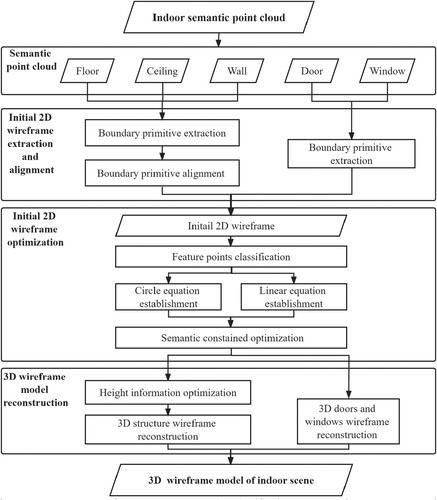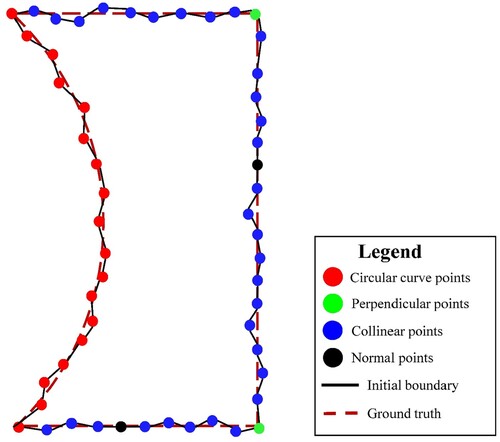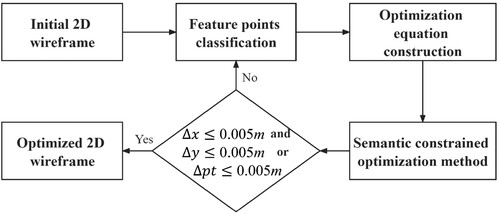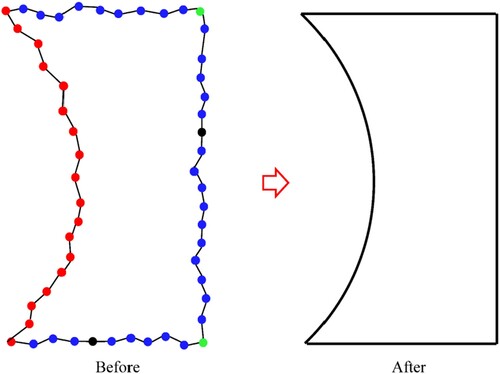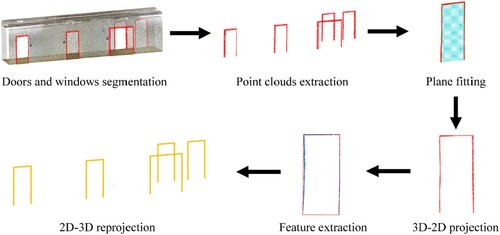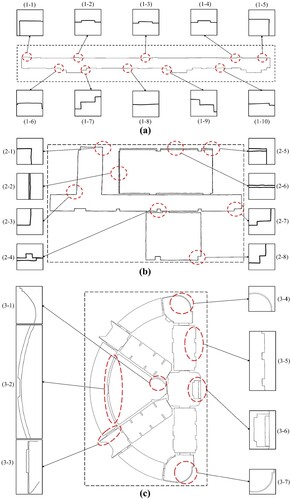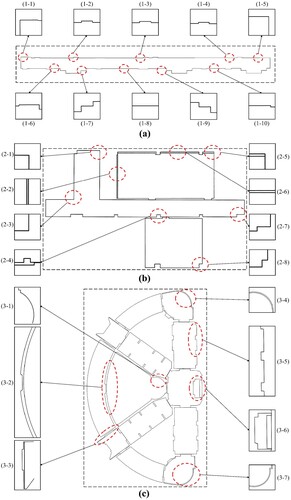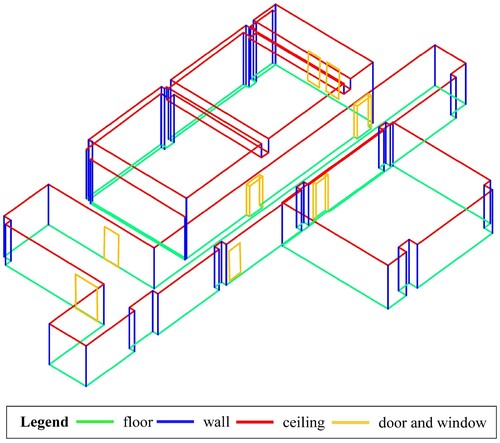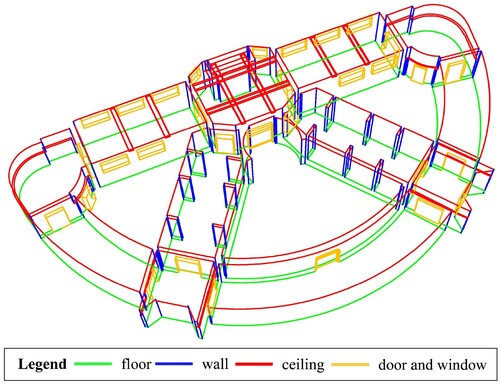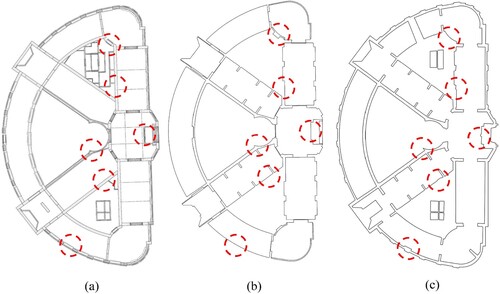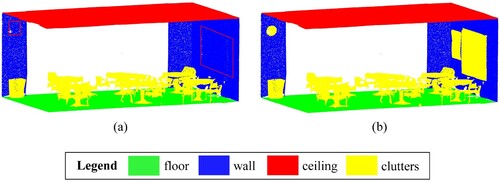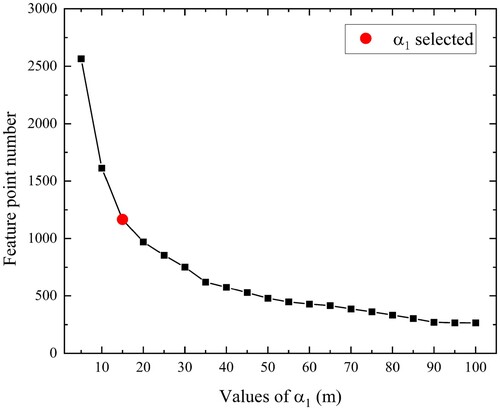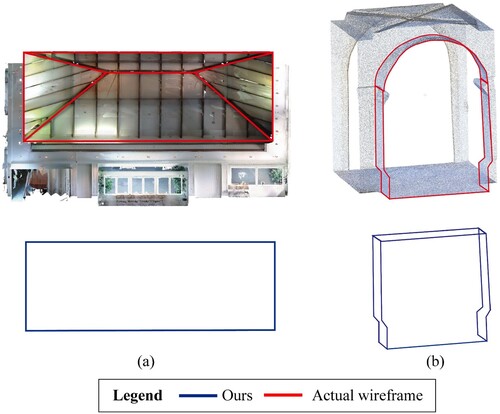Figures & data
Figure 2. Floor boundary primitive extraction. (a) Rough boundary of . (b) Detailed boundary of
. (c) Illustration of combined polygons. (d) Result of boundary extraction.
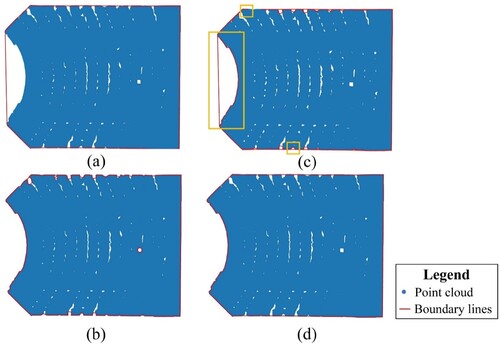
Figure 6. Illustration of linear feature optimization. (a) Perpendicular condition. (b) Collinear condition.

Figure 10. Illustration of height information extraction. (a) Schematic diagram of the cylinder method. (b) Example of height extraction by the cylinder method.
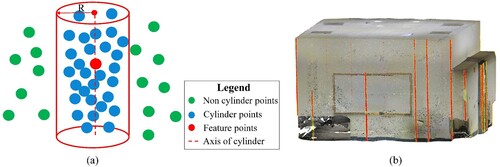
Figure 11. Height information optimization. (a) Abnormal height. (b) Height undulation. (c) Corrected abnormal height. (d) Smooth height edges.

Figure 12. Reference height extraction by a height histogram. (a) Histogram of the height distribution of points. (b) Corresponding plane detected by the histogram.
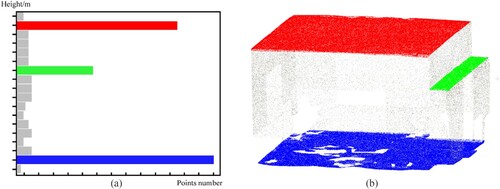
Figure 13. Height information extraction and reconstruction. (a) Height information in the point cloud. (b) Reconstruction structure from height information.
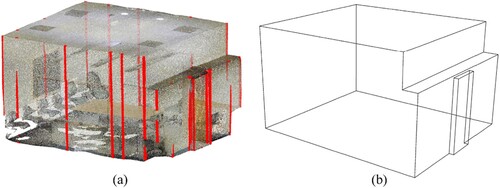
Table 1. Data description of testing scenes.
Table 2. Parameters for floor boundary extraction.
Table 3. Parameters for wall boundary extraction.
Figure 18. 3D wireframes of Scene 1. (a) 3D wireframe with semantics. (b) Details of doors and windows.
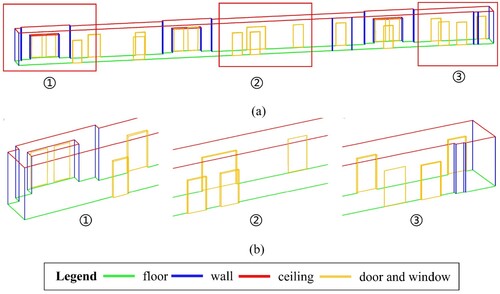
Figure 21. Distribution of the accuracy evaluation. (a) Planar accuracy. (b) Curve accuracy. (c) Height accuracy.

Table 4. Average of evaluation indicators.
Figure 23. 3D Method comparison on Scene 2. (a) Our method. (b) Oesau et al.’s method. (c) Wang et al.’s method. (d) Han et al.’s method.
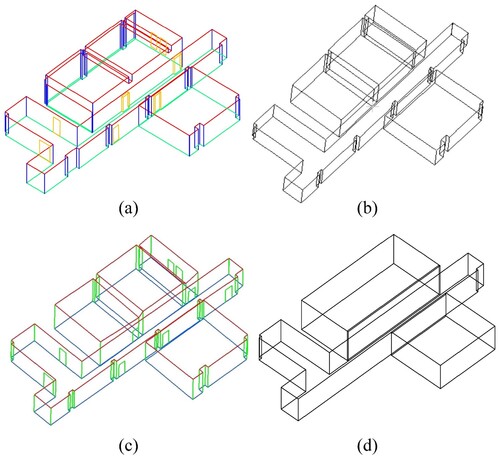
Table 5. The position error of points of Scene 2.
Table 6. The position error of points of Scene 3.

